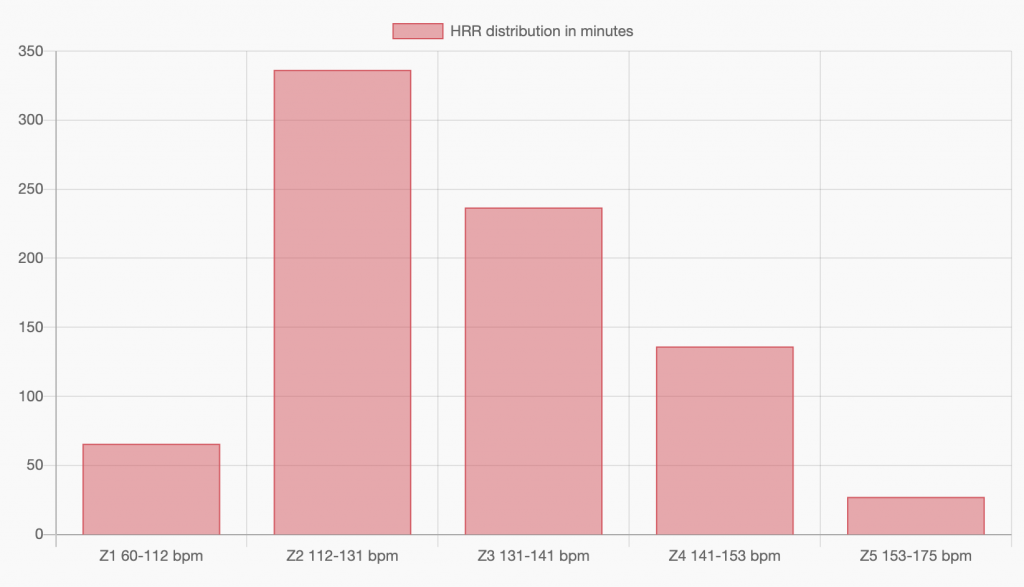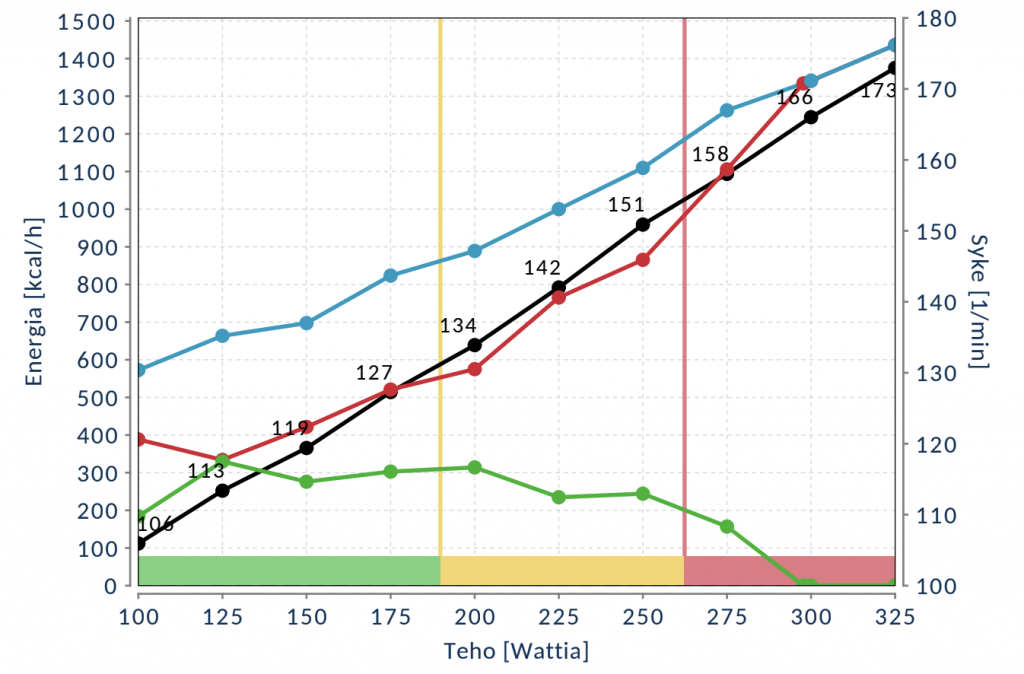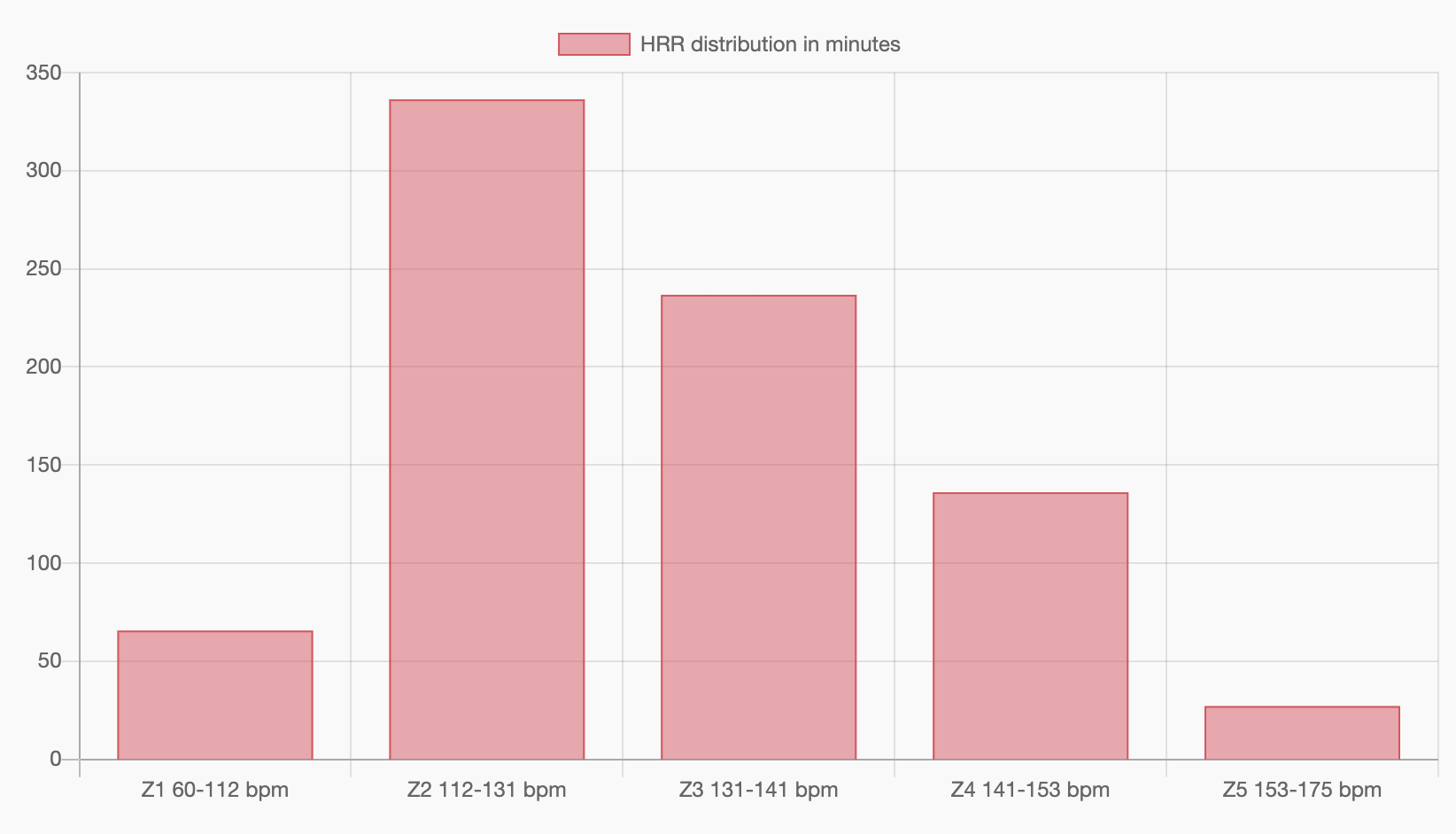When preparing for a long ride like Paris-Brest-Paris, I need to make sure I can cover a lot of ground as fast as possible and with the lowest heart rate possible.

The whole game is to be in a functioning mode where you burn energy that you consume and you don’t start digging into your reserves.
You probably have an idea of your maximum heart rate. This area and 10-15% below is a no-go zone on a long ride. The more time you spend in that zone and the more tired you will be. This is the dreaded zone 5.
As a rule, on a long ride, I am trying to spend 80%-90% of the time on zone 2-3. Zone 4 is a necessary evil when climbing. And sometimes you feel so good that you end up in zone 1.
Fitness test
The best way to calculate your zones, is to take a fitness test. In Helsinki, I went to R5.
You sit on a stationary bike, and the coach increases the resistance by increments of 25W. One minute per increment. After each minute, the coach pricks your finger to get some blood and measure lactation.
This is the result of my test:

You want to start measuring lactate in the blood as late as possible as this is showing when your body is not able to eliminate lactate as fast as it’s produced. When you reach that threshold, you enter anaerobic exercise. And there is a good chance you won’t be able to sustain this exercise for very long.
In my case, you can notice that I am entering the red zone around 260W. This is pretty much my FTP. Functional Threshold Power. I am able to sustain an exercise of this intensity for quite a long time without getting myself too tired. If I start venturing further in the red zone, I won’t be able to sustain that exercise for very long.
On the other end, you want to make sure you have a solid base. The green zone goes as far as you still have a positive trend in fat burning. As soon as your fat burning starts to decline with the intensity increasing, you are no more in your base. It’s not bad. But you work on an hybrid fuel where some of your power comes from the fat and some comes from the glycogen which stores energy in your muscles.
Both of these energy storages produce ATP at different rates, which is in turns used by muscles for contracting.
So to come back on the name of the game, you really don’t want to use too much of that glycogen, and instead use the fat. It’s easy to eat fat, and it’s easy to store it.
What to eat
One of the things I want to try and understand is what I should be eating in order to replenish my fat storage and my glycogen storage, on the go. I need to be able to ingest a lot of food over a long period of time, process it, and make it available for my muscles to continue working.
And the reason I don’t only want to consume fat and stay in a zone where I only use fat, is because I need to go fast.
Calculations
Paris-Brest-Paris is a 1200km ride with 11000m D+ elevation. That pretty long.
Let’s break it down: It’s roughly 4x300km. You have 90 hours to complete it so that’s really just 4 days and 3 nights.
Let’s say I travel at 20km/h. That’s 60 hours on the bike. And 30 hours off the bike, assuming everything works well. Obviously I am not planning to try and complete this ride in exactly the time I have. I will definitely need to finish it faster in order to have a safety buffer. There would be nothing worse than training for 3 years for an event and fail by a few minutes, or hours.
From what I understood, there are 12 mandatory stops, and they are crowded and it takes forever to get some food there. I have already acknowledged that and made a mental note to just empty unfinished plates, or eat outside of the control points. But let’s say they still take about 30 min each. That’s 6h of stopping and waiting.
Time for resting, let’s say one hour every 200km. 6 hours
Time for sleeping, I don’t think I am one of these warriors who just ride through the night and never sleeps. I will definitely need 4h of sleep. Three times. That’s another 12 hours.
We get to a grand total of 24 hours of resting, stopping for food… The buffer is now just 6 hours. Too close for comfort if you ask me. I would like to have at least 10 hours of buffer. Finishing in 80 hours, or at least aiming to finish in 80h would be good.
How do we get there? That means not 60h cycling by 54h cycling. Which is 22km/h. It’s a 10% speed increase.
I already know I am able to ride 300km around 24km/h with more elevation than PBP. Just gotta do it 4 times, right? In 2 weeks, we will try a 600km and we’ll see how fast we can go. The issue with this ride will be that the elevation is not comparable to PBP as it’s only 2500m.
So how can I increase my speed and still be comfortable? I guess I need to start doing structured exercises, and participate more in my team “veto”. Not always at the back of the pack, but spend more time training in sweet spot.

